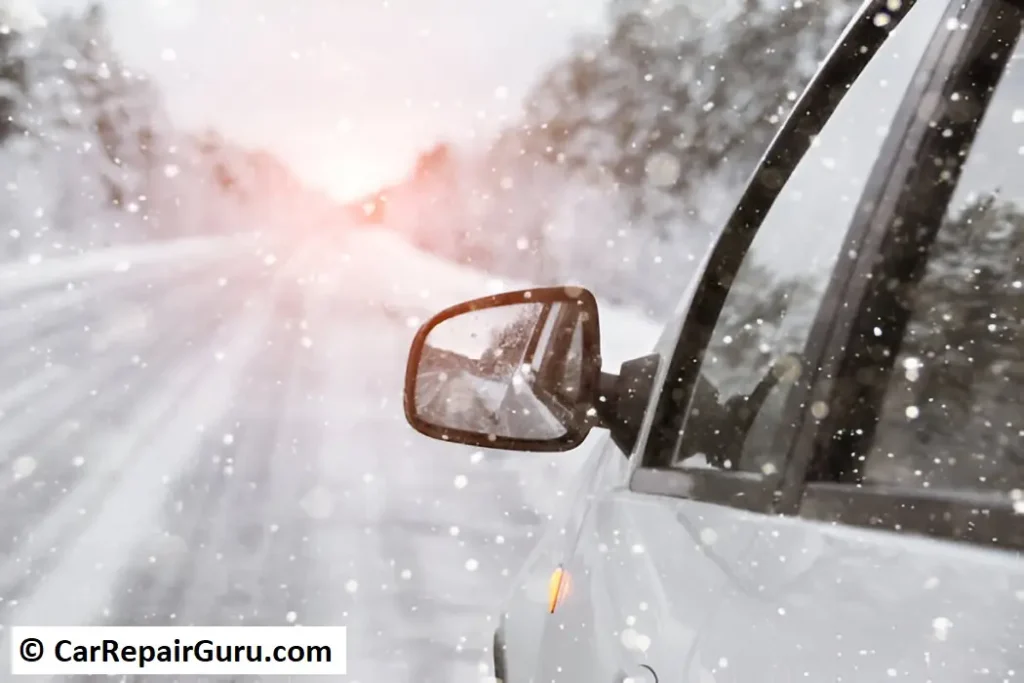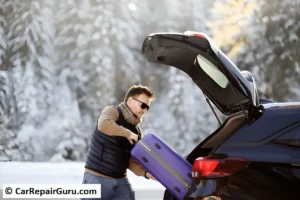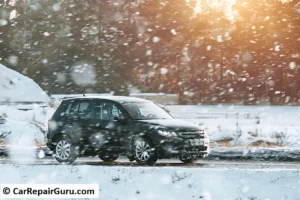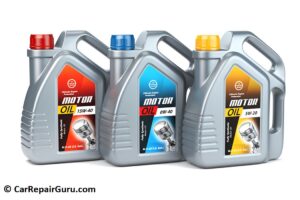
Introduction: The Importance of Winter Driving Safety
Winter driving is no ordinary task—it’s a skill that demands preparation, vigilance, and adaptability. Each year, icy roads and heavy snowfall contribute to thousands of accidents, often leaving drivers stranded or injured. However, with the right approach, you can significantly reduce your risk and navigate winter roads confidently.
This guide provides essential winter driving safety tips to help you prepare your vehicle, adjust your driving techniques, and handle emergencies effectively. Whether you’re a seasoned driver or new to winter travel, understanding these principles is crucial for staying safe and keeping your loved ones secure during the colder months.
By the end of this guide, you’ll be equipped with actionable strategies to minimize risks, ensuring a safer and smoother journey despite the challenging weather. Stay with us as we explore the must-know tips for driving in snow and ice.
Preparing Your Vehicle for Winter
When winter arrives, your car needs to be ready to tackle icy roads and freezing temperatures. Follow these essential winter driving safety tips to prepare your vehicle effectively.
Key Maintenance Tasks:
- Tires: Check your tire tread depth and consider switching to winter tires for better traction on snow and ice. Keep them properly inflated, as cold weather reduces air pressure.
- Fluids: Top off essential fluids, including windshield washer fluid with antifreeze properties. Ensure your coolant and engine oil are winter-ready to prevent freezing or thickening.
- Battery: Cold weather reduces battery efficiency. Test your battery’s charge and clean the terminals to ensure a strong start in subzero temperatures.
Must-Have Items for Your Winter Emergency Kit:
Be prepared for any situation by packing a winter emergency kit. Include essentials like:
- A snow shovel and ice scraper.
- Warm blankets, gloves, and extra clothing.
- Non-perishable food and water.
- A flashlight with spare batteries.
- Sand or kitty litter for traction if stuck.
Taking these steps not only minimizes breakdown risks but also keeps you prepared for unexpected situations. With these winter driving safety tips, your car will be ready to face the harshest conditions, ensuring a safer journey wherever you go.
Adapting Your Driving Techniques for Snowy Roads

Driving in snow requires mastering winter driving safety tips to navigate icy and slippery roads safely. Adjusting your driving techniques can make a significant difference in maintaining control and preventing accidents.
Smooth Acceleration and Deceleration
When starting your car on snowy or icy roads, accelerate gently to avoid spinning your wheels. Use steady pressure on the gas pedal, allowing the tires to gain traction gradually. Similarly, brake slowly and steadily to prevent skidding. If your car is equipped with anti-lock brakes (ABS), let the system do the work—apply firm, consistent pressure to the pedal.
Controlled Braking and Turning
Plan stops early and avoid slamming on the brakes. Begin braking sooner than you would in normal conditions, and keep a greater following distance from the vehicle ahead. When turning, reduce your speed before entering the curve and steer gently to maintain stability.
Avoiding Sudden Movements
Sudden steering, braking, or accelerating can lead to loss of control. Always make smooth, deliberate movements, and avoid abrupt actions that could cause the car to skid.
Additional Tips:
- Use lower gears to maintain traction, especially on hills.
- Keep your headlights on to enhance visibility in snow or fog.
- Drive defensively, anticipating the actions of other drivers who may struggle with the conditions.
By applying these winter driving safety tips, you’ll improve your ability to navigate snowy roads with confidence and control. Remember, patience and caution are your best tools for staying safe in winter weather.
Navigating Extreme Winter Conditions
Driving in harsh winter weather is a true test of skill and preparation. Use these winter driving safety tips for challenging conditions to navigate snow, ice, and poor visibility while staying safe on the road.
AWD/4WD: Assistance, Not a Guarantee
All-wheel drive (AWD) and four-wheel drive (4WD) are helpful tools for tackling slippery roads and uneven terrain, as they improve traction and stability. However, they do not make your vehicle immune to the dangers of ice or snow. Overconfidence in these systems can lead to excessive speed or risky maneuvers. Regardless of your vehicle’s capabilities, practice safe habits like reducing speed and maintaining a safe following distance.
Staying Alert for Snowplows
Snowplows are essential for keeping roads passable, but they also present unique hazards. Maintain a safe distance behind snowplows, as their wide blades and salt spreaders can create sudden obstacles. Avoid passing them unless absolutely necessary; the road ahead is often less clear than the one behind the plow.
Maintaining Visibility
Winter storms can drastically reduce visibility. Keep your windshield and mirrors clear by using winter-grade washer fluid and ensuring your wipers are in good condition. If visibility drops due to snow or fog, slow down and turn on your headlights (or fog lights, if equipped). Avoid using high beams, as they can reflect off the snow and impair your vision further.
Additional Tips for Extreme Conditions:
- On icy roads, avoid driving on the edges, where ice tends to accumulate.
- Beware of black ice, especially on bridges and shaded areas.
- If the conditions become too severe, it’s safer to pull over and wait for visibility or road conditions to improve.
By following these winter driving safety tips, you’ll be better equipped to handle the toughest conditions winter has to offer.
What to Do During a Winter Driving Emergency

Emergencies demand preparation; follow these winter driving safety tips to stay safe if you find yourself stranded or in trouble during harsh winter conditions.
Stay With Your Vehicle
If your car becomes stuck or breaks down, staying with it is your safest option. Your vehicle provides shelter and makes it easier for rescuers to find you. Only leave to seek help if there is no immediate danger, you can clearly see a safe destination, and conditions are manageable.
Conserve Fuel and Stay Warm
To conserve fuel, only run the engine periodically—about 10 minutes every hour. During this time, turn on the heater to warm up the car and charge devices if needed. Dress in layers, use blankets, and rely on body heat to stay warm in between.
Clear the Exhaust Pipe
One critical safety step is to check the exhaust pipe for snow or ice buildup. A blocked exhaust pipe can cause carbon monoxide (CO) to enter the vehicle, which is odorless and deadly. Clear it periodically to prevent poisoning.
Signal for Help
Make your car visible by attaching a brightly colored cloth to the antenna or a window. At night, keep the dome light on—this uses minimal power but increases visibility for rescuers.
Additional Tips:
- Crack a window slightly to allow for fresh air circulation.
- Stay hydrated and avoid overexerting yourself if shoveling snow.
By staying prepared and following these winter driving safety tips, you can protect yourself and your passengers until help arrives.
Planning for Long-Distance Winter Travel

Long trips require extra preparation with these winter driving safety tips to ensure a smooth and safe journey. Whether you’re traveling to visit family or heading to a winter retreat, taking the time to plan can prevent breakdowns and keep you out of harm’s way.
Importance of Vehicle Inspection
Before embarking on a long-distance trip, inspect your vehicle thoroughly. Check tire pressure, tread depth, and consider using winter tires for enhanced traction. Ensure all fluids—oil, coolant, and windshield washer fluid—are topped off and winter-grade. Test your battery’s charge and confirm that lights, wipers, and defrosters are functioning properly.
Route Planning and Real-Time Updates
Plan your route ahead of time and identify alternative paths in case of road closures or severe weather. Use navigation apps that provide real-time updates on road conditions and traffic. Share your travel itinerary with a trusted friend or family member, so they know your planned route and estimated arrival time.
Communication Strategies for Emergencies
Carry a fully charged phone and a car charger or power bank. Keep an emergency contact list easily accessible, and familiarize yourself with the nearest service stations along your route. If stranded, communicate your location to emergency services and stay with your vehicle for safety.
By following these winter driving safety tips, you’ll be well-prepared to handle the unique challenges of long-distance travel during the colder months. Plan smart and stay safe!
Conclusion: Stay Safe and Prepared
Winter driving demands caution, preparation, and adaptability. By following the winter driving safety tips shared in this guide, you can significantly reduce risks and navigate cold-weather conditions with confidence. From preparing your vehicle with winter tires and emergency kits to adopting safer driving techniques and knowing how to handle emergencies, these habits will help you stay safe on icy and snowy roads.
Remember, preparation is your best defense. Inspect your vehicle before trips, adjust your driving style for winter conditions, and stay informed about weather updates and road closures. Most importantly, always prioritize safety over speed or convenience.
By adopting these habits, you’ll protect yourself, your passengers, and other drivers. Stay vigilant, plan ahead, and face winter roads with the confidence that you’re well-prepared to handle whatever the season brings.
FAQ: Common Winter Driving Questions
Q: What are the best tires for winter driving?
A: Winter tires with deep tread patterns are the best choice for snow and ice. They are designed to maintain grip in low temperatures and improve traction on slippery surfaces. Consider investing in a full set for maximum safety.
Q: Can I use cruise control in winter conditions?
A: Avoid using cruise control on snowy or icy roads. Cruise control reduces your ability to respond quickly to changing conditions, such as skidding or sudden stops. Always maintain manual control of your speed.
Q: What should I include in a winter emergency kit?
A: A well-stocked emergency kit is essential. Include blankets, non-perishable food, bottled water, a flashlight with extra batteries, a snow shovel, a glass scraper, jumper cables, and sand or kitty litter for traction.
Q: How do I regain control if my car skids?
A: If your car begins to skid, avoid slamming the brakes. Instead, steer gently in the direction of the skid to regain control. Once your car straightens out, gradually reduce your speed to prevent further skidding.
By addressing these common concerns, you can feel more confident and prepared to face winter roads safely.





